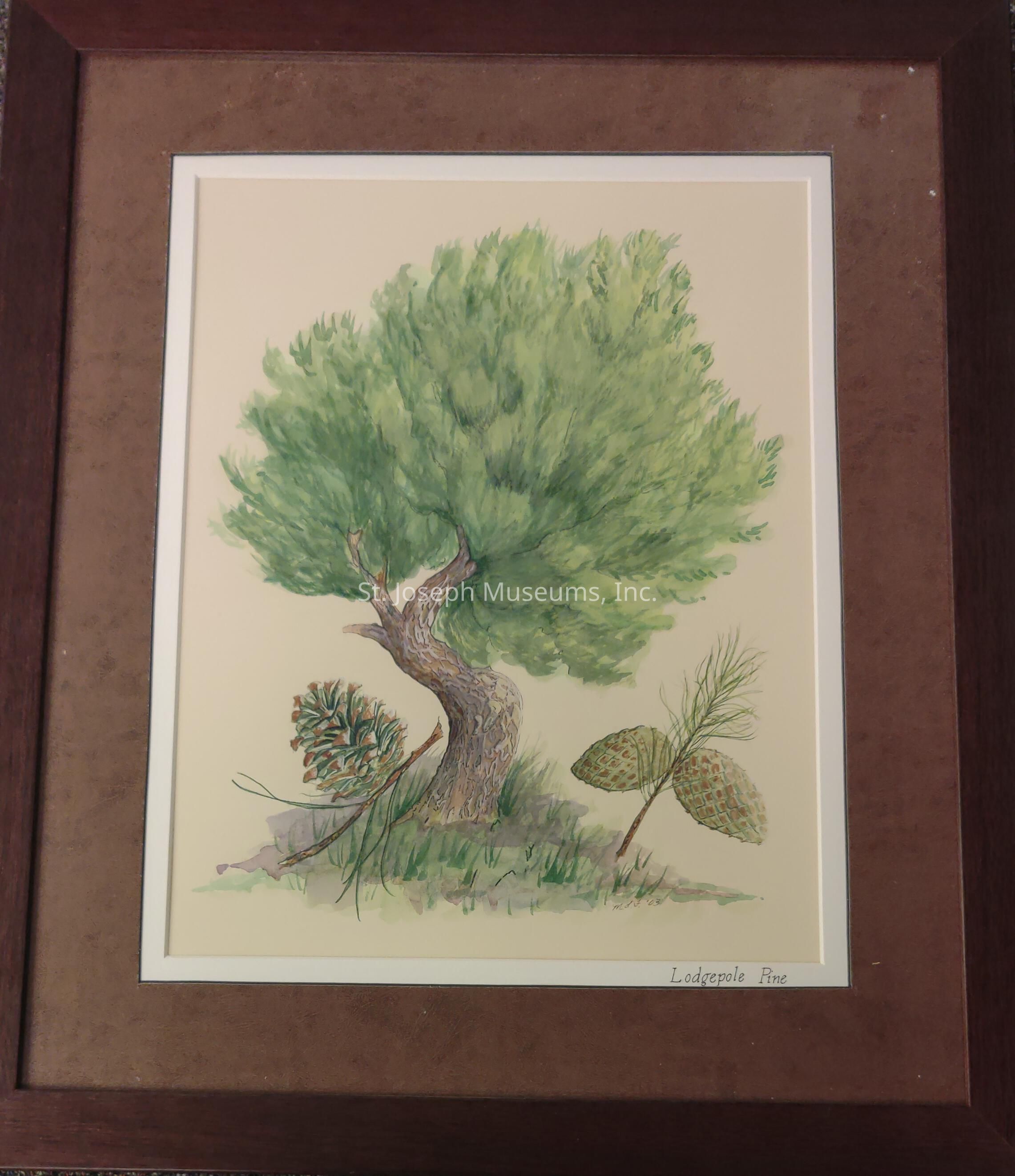Name/Title
Lodgepole Pine (Pinus contorta) WatercolorEntry/Object ID
2021.1.60 AScope and Content
Lodgepole Pine (Pinus contorta) Watercolor, framed.
There are four varieties of Pinus contorta or Lodgepole Pine. The species name usually makes people think of the tall straight varieties which grow in the Rocky Mountain, Sierras and Cascades. However, one variety more accurately fits the name of Pinus contorta. It is the Shore or Scrub Pine variety which grows along the Pacific coast from Alaska to California and east to Montana. The tree, which grows to around 20 feet, has a short, rounded top with dark green needles and a blackish, furrowed trunk which is gnarled, twisted and contorted.Context
Originally designed by the St. Joseph Museum in the fall of 2004. Titled "Botanical Wonders of the Uncharted West. The Recorded Flora of the Lewis & Clark Expedition."Collection
Lewis and ClarkLexicon
LOC Thesaurus for Graphic Materials
Botanical drawings, Expeditions & surveysArchive Items Details
Title
Lodgepole Pine (Pinus contorta) WatercolorCreator
Mary L. FletcherDate(s) of Creation
2004Subjects
Plants, Watercolor paintingsParts
Count
2Parts
Watercolor of plant and descriptive label, both framed.Condition
Overall Condition
Very GoodProvenance
Notes
"Botanical Wonders of the Uncharted West" visually depicts how well Lewis followed Jefferson's instructions. In recognition of this achievement, The S. Joseph Museums, Inc. commissioned accomplished artist Mary Fletcher to create fifty (50) selected paintings of flora documented by the Corps during their Journey. These framed watercolor originals are accompanied by similarly framed labels, generated by former Head of Research Jackie Lewin, which describe the corresponding plants with appropriate quotations from the Journals. This collection makes available for study and appreciation plants that were new to Lewis and Clark, but which Native Peoples already recognized as valuable sources of food, medicine, and tools. Some of these still remain a mystery to many, but all will enjoy their beauty, their diverse uses, and their accomplished renderings.
